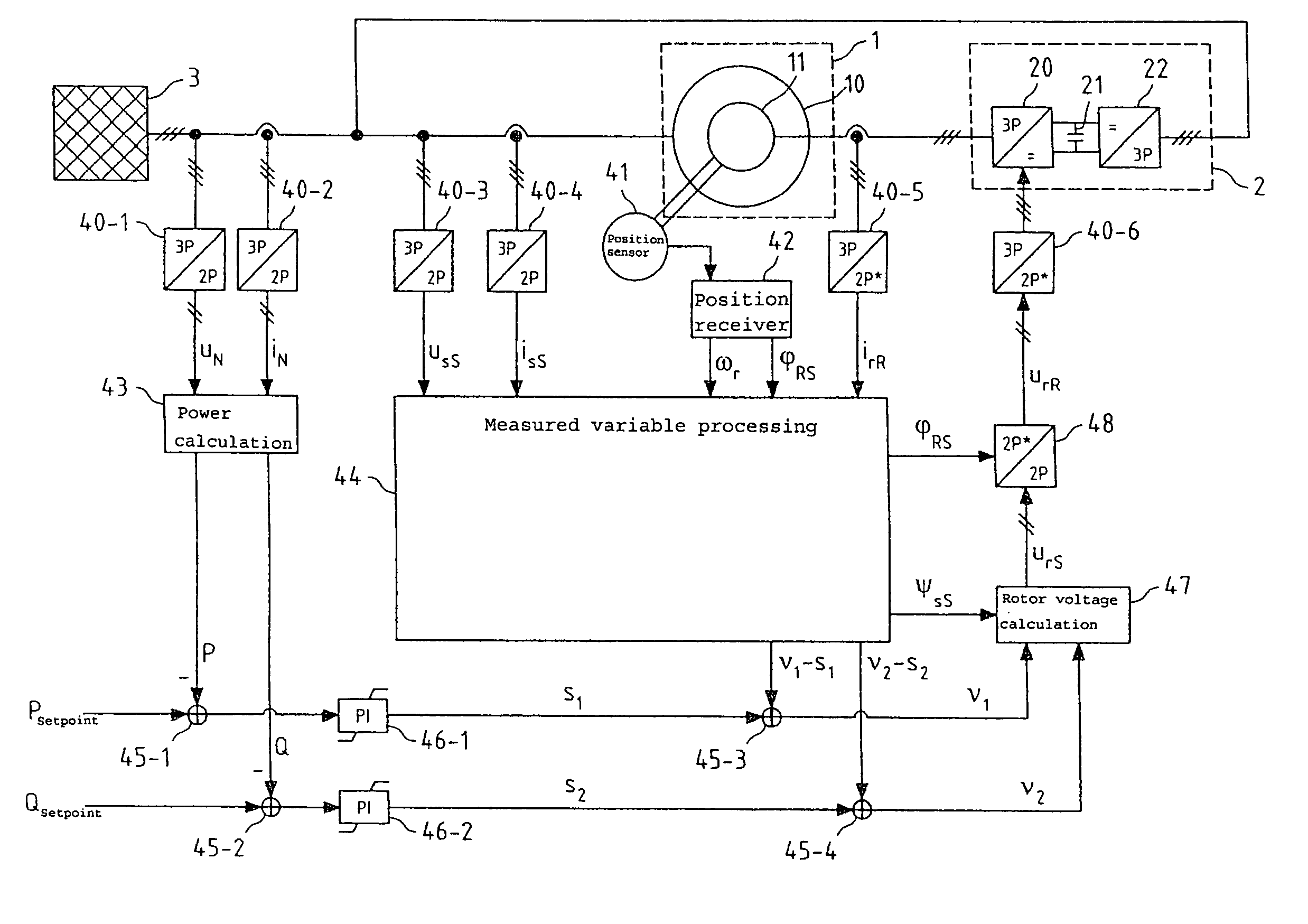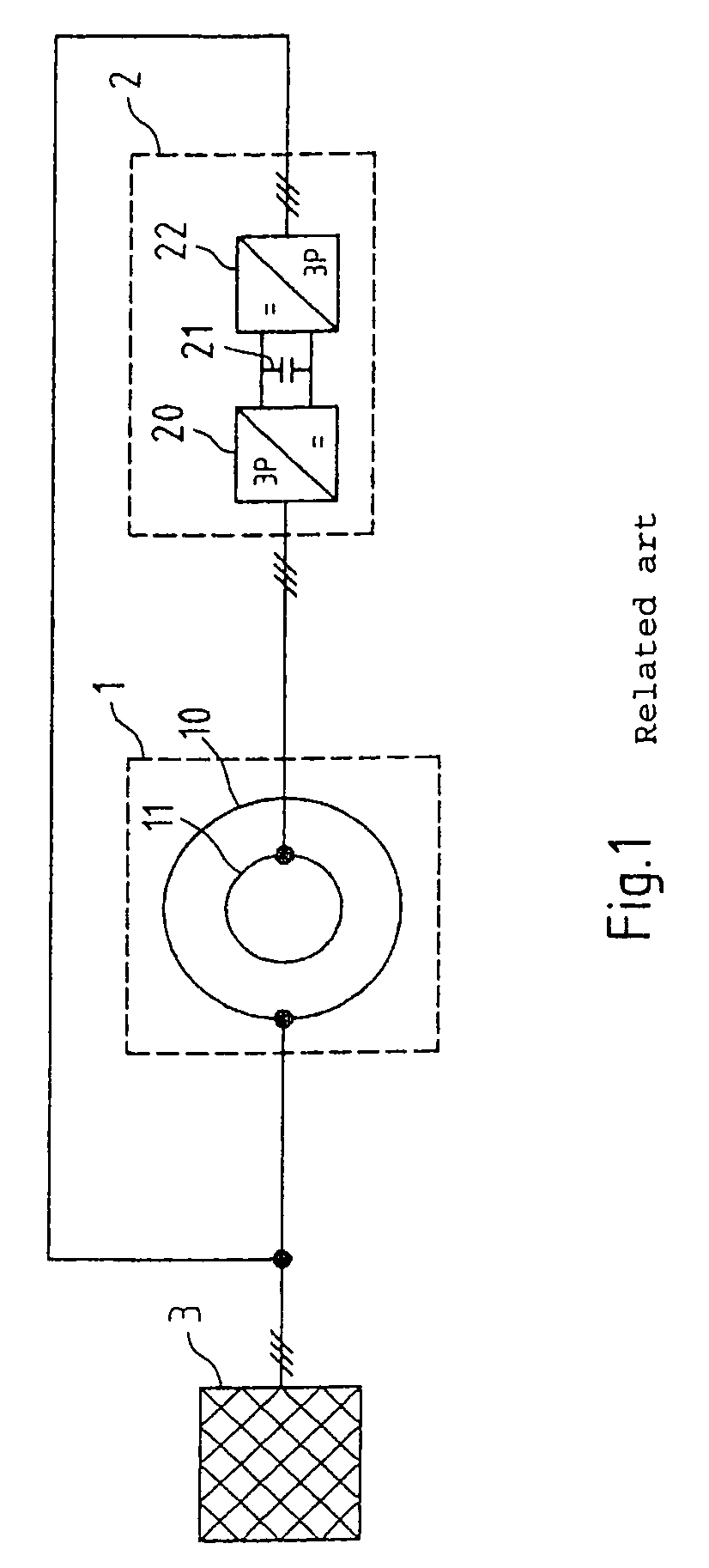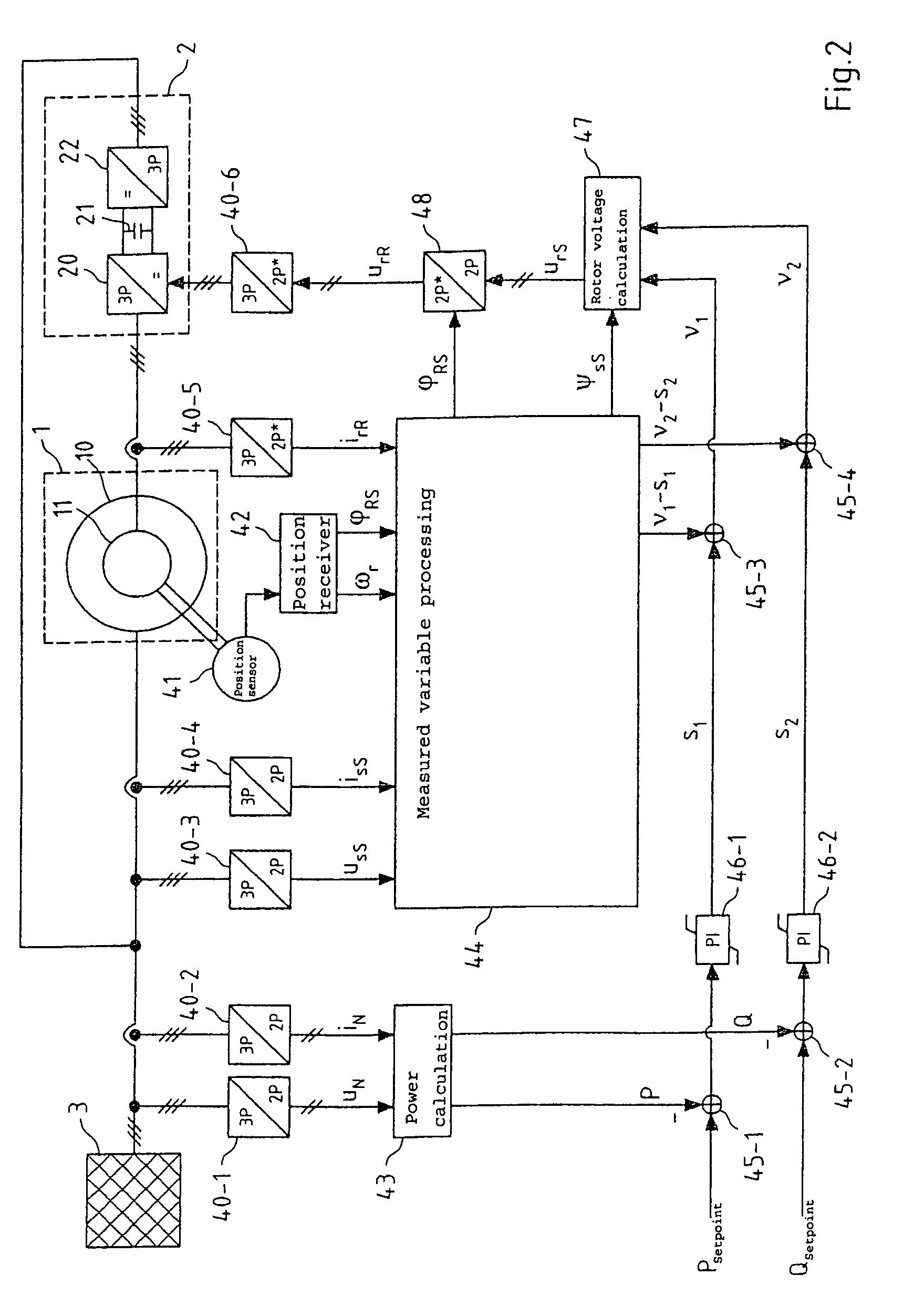Power control of an induction machine
a technology of power control and induction machine, which is applied in the direction of electric controllers, ignition automatic control, instruments, etc., can solve the problems of restricted slip range of power regulation, asynchronous machines with slip-ring rotors, and power regulation of krzeminski, and achieve stable regulation of active power
- Summary
- Abstract
- Description
- Claims
- Application Information
AI Technical Summary
Benefits of technology
Problems solved by technology
Method used
Image
Examples
Embodiment Construction
[0065]The present invention relates to the regulation of the active and reactive power of induction machines. This regulation is explained in the following using the example of a double-fed asynchronous machine having an inverter in the rotor circuit. The regulation according to the present invention is also equally suitable, however, for other induction machines, in particular for asynchronous machines having squirrel-cage rotors and full inverters in the stator circuit and for synchronous machines.
[0066]FIG. 1 shows an asynchronous machine 1 of this type, which comprises a stator 10 and a rotor 11. The rotor is connected directly or via a gear unit to a driveshaft and may thus alternately receive mechanical power (generator operation) or output mechanical power (motor operation).
[0067]The stator 10 in asynchronous machine 1 shown in FIG. 1 is connected directly to three-phase current mains 3, while the rotor 11 is connected via an inverter 2 to the three-phase mains 3. The inverte...
PUM
 Login to View More
Login to View More Abstract
Description
Claims
Application Information
 Login to View More
Login to View More - R&D
- Intellectual Property
- Life Sciences
- Materials
- Tech Scout
- Unparalleled Data Quality
- Higher Quality Content
- 60% Fewer Hallucinations
Browse by: Latest US Patents, China's latest patents, Technical Efficacy Thesaurus, Application Domain, Technology Topic, Popular Technical Reports.
© 2025 PatSnap. All rights reserved.Legal|Privacy policy|Modern Slavery Act Transparency Statement|Sitemap|About US| Contact US: help@patsnap.com



